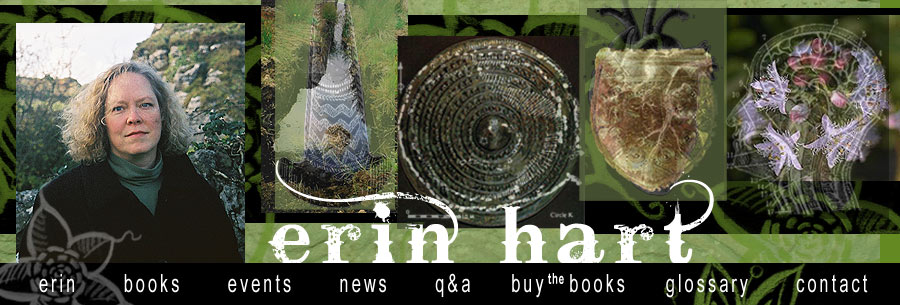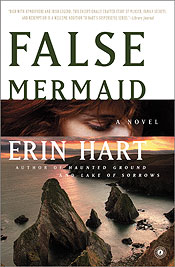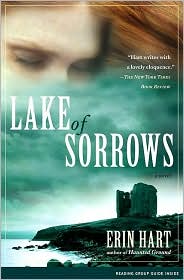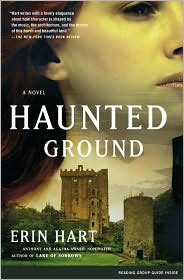You might well wonder whether I've tried to make them into little replica bog men. Not yet, but I suppose it could be done...
Gingerbread Men
2 cups sugar
1 cup shortening
1 cup dark molasses
2 eggs
7 cups flour (more or less)
1 cup hot coffee (with 2 heaping teaspoons baking soda added)
2 teaspoons ground cinnamon
1 teaspoons ground ginger
Mix sugar, shortening, molasses, and egg with electric mixer, then slowly add hot coffee/soda mixture and stir well. (It will look horrible, but don't be deterred!) Add half the flour, spices, and stir thoroughly, then add remaining flour until the dough is easily handled, but still sticky. Cover and chill overnight. Roll out and cut as desired. Bake cookies at 350°F for 10 minutes, or until no imprint remains. When cool, frost and decorate as desired.
When the frosting is dry, layer the cookies in tins or plastic food containers, and put a few apple slices wrapped loosely in aluminum foil around the edges. This helps soften the cookies, and gives them a lovely apple flavor. Remove the apples after a few days, before they become a science experiment!
1 cup shortening
1 cup dark molasses
2 eggs
7 cups flour (more or less)
1 cup hot coffee (with 2 heaping teaspoons baking soda added)
2 teaspoons ground cinnamon
1 teaspoons ground ginger
Mix sugar, shortening, molasses, and egg with electric mixer, then slowly add hot coffee/soda mixture and stir well. (It will look horrible, but don't be deterred!) Add half the flour, spices, and stir thoroughly, then add remaining flour until the dough is easily handled, but still sticky. Cover and chill overnight. Roll out and cut as desired. Bake cookies at 350°F for 10 minutes, or until no imprint remains. When cool, frost and decorate as desired.
When the frosting is dry, layer the cookies in tins or plastic food containers, and put a few apple slices wrapped loosely in aluminum foil around the edges. This helps soften the cookies, and gives them a lovely apple flavor. Remove the apples after a few days, before they become a science experiment!















































